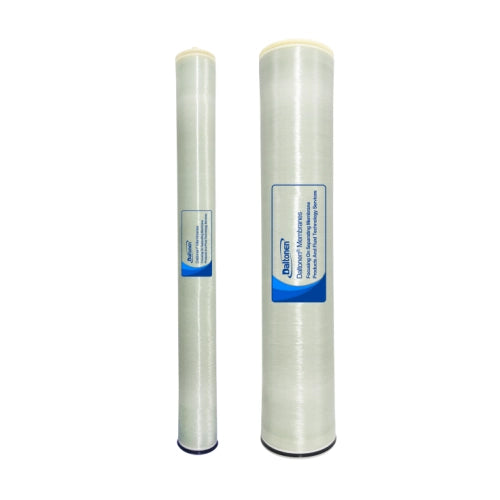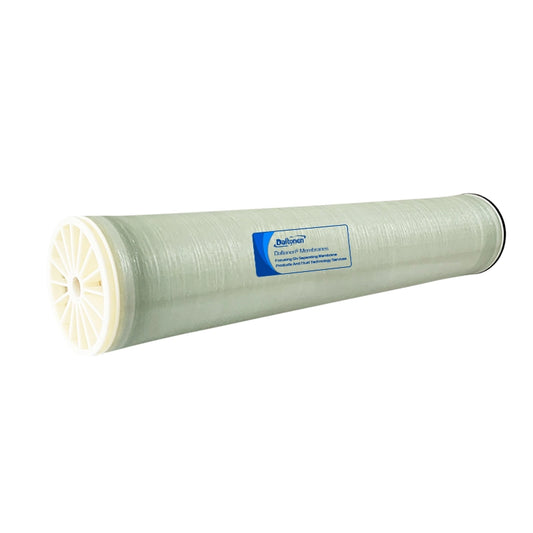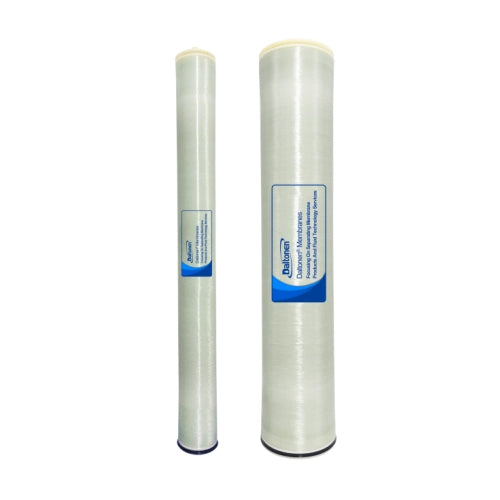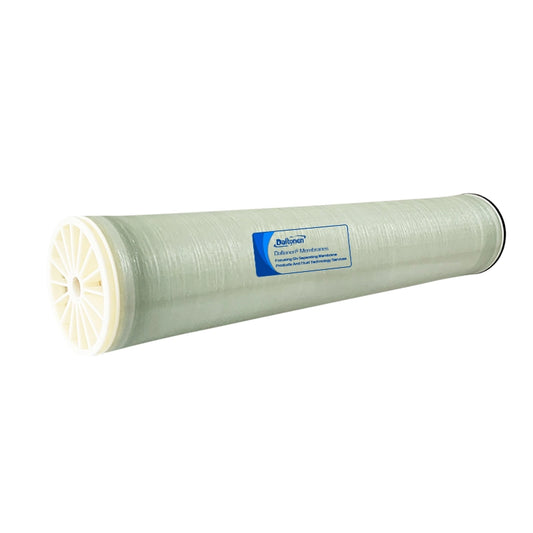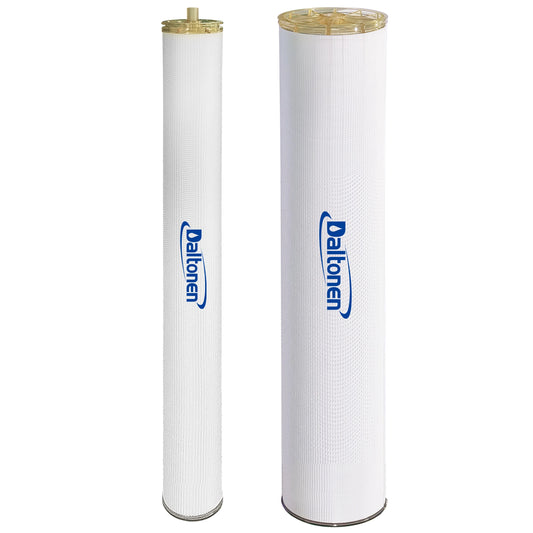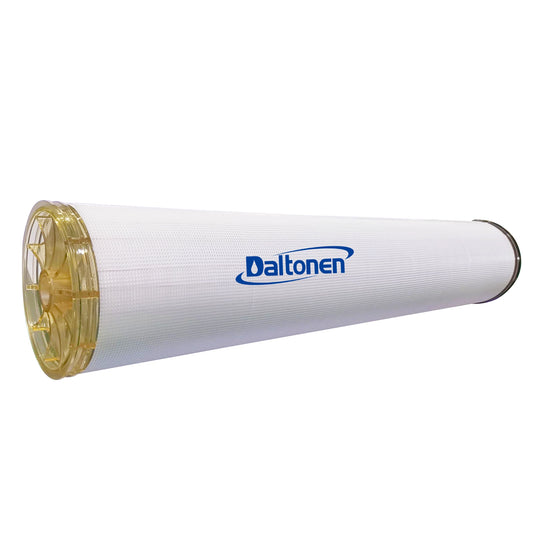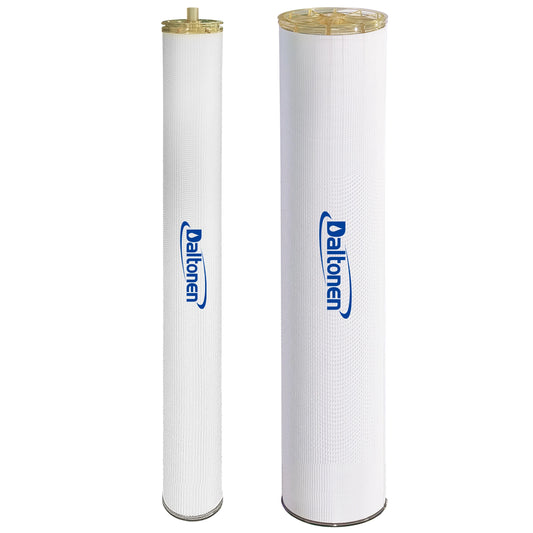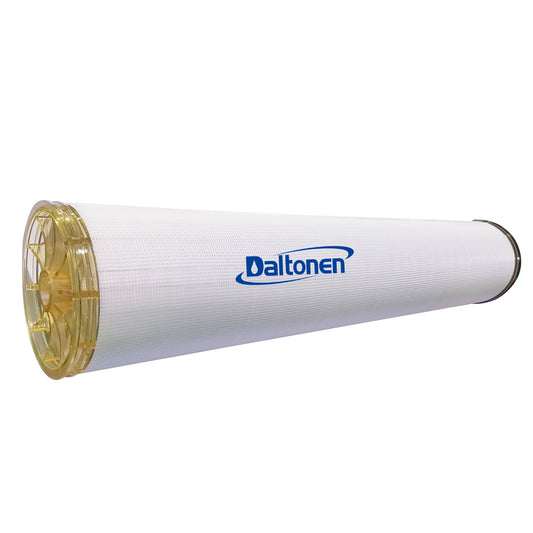What is the Principle of Ion Separation by Reverse Osmosis Membrane
What is the Principle of Ion Separation by Reverse Osmosis Membrane
1. Overview of Reverse Osmosis Membrane Separation Principle
1.1 Basic Concepts and Definitions
A reverse osmosis membrane is a semipermeable membrane used for separating solvents and solutes in a solution. Its fundamental principle is to utilize pressure difference as the driving force, enabling solvents (such as water molecules) to flow from regions of high concentration to regions of low concentration, thereby achieving separation. The full English name of reverse osmosis technology is "Reverse Osmosis," abbreviated as "RO." In natural osmosis, solvents spontaneously flow from regions of low concentration to regions of high concentration, while reverse osmosis involves applying pressure to make solvents flow in the opposite direction, i.e., from regions of high concentration to regions of low concentration.
The selective permeability of reverse osmosis membranes is their core characteristic, allowing only small molecules such as water molecules to pass through while preventing the permeation of impurities such as inorganic salts, heavy metal ions, organic substances, bacteria, and viruses. This selective permeability primarily depends on the chemical structure and pore size of the membrane material.
1.2 Description of the Working Process
The working process of reverse osmosis membranes mainly includes the following steps:
1.2.1 Applying Pressure
Reverse osmosis systems apply pressure to the feed water using high-pressure pumps, exceeding the osmotic pressure of the solution. Osmotic pressure is a function of the solute concentration in the solution, with higher concentrations resulting in greater osmotic pressure. The applied pressure typically ranges from 1.5 to 10.5 MPa, depending on the concentration of the solution to be treated and the type of membrane.
1.2.2 Solvent Permeation
Under high pressure, water molecules and other small molecule solvents pass through the microstructure of the reverse osmosis membrane, flowing from regions of high concentration to regions of low concentration. The pore size of the membrane is generally between 0.1 nanometers and 10 nanometers, effectively retaining large molecular solutes and inorganic salts.
1.2.3 Solute Retention
The retention of solutes by reverse osmosis membranes mainly relies on their selective permeability. The chemical structure and pore size of the membrane material determine its retention capacity for different solutes. For example, the desalination rate for multivalent ions and complex monovalent ions can exceed 99%, while the desalination rate for monovalent ions such as sodium ions, potassium ions, and chloride ions also exceeds 98%.
1.2.4 Concentration and Discharge
Water molecules that pass through the membrane form the product water, while the solutes and some water molecules that do not pass through the membrane form the concentrate, which is ultimately discharged as wastewater. The recovery rate of reverse osmosis systems typically ranges from 30% to 70%, i.e., the percentage of product water flow to feed water flow.
The working process of reverse osmosis membranes is a continuous dynamic equilibrium process. By continuously applying pressure and adjusting operating conditions, efficient separation of solvents and solutes can be achieved.
2. Ion Separation Mechanism
2.1 Dissolution-Diffusion Model
The dissolution-diffusion model is one of the important theories explaining the ion separation mechanism of reverse osmosis membranes. Its core idea is that the permeation behavior of solutes and solvents is determined by their solubility and diffusion coefficients in the membrane.
- Solubility Differences: The membrane material has different solubilities for various solutes, usually with a higher solubility for water molecules and a lower solubility for inorganic salts. This solubility difference allows water molecules to more easily enter the interior of the membrane, while solutes dissolve relatively less in the membrane.
- Diffusion Coefficient Influence: Inside the membrane, the diffusion coefficients of solutes and solvents are also different. Water molecules typically have a larger diffusion coefficient and can quickly pass through the microstructure of the membrane, while solutes have a smaller diffusion coefficient and a slower permeation speed.
- Experimental Data Support: Studies have shown that in the reverse osmosis process, the permeation rate of water molecules is much higher than that of solutes, and the solute concentration in the product water is significantly reduced, which is consistent with the predictions of the dissolution-diffusion model.
- Model Limitations: The dissolution-diffusion model assumes that the membrane is homogeneous and does not consider factors such as the microscopic structure and defects of the membrane. Therefore, it may have limitations in explaining the separation behavior of some complex systems.
2.2 Preferential Adsorption-Capillary Flow Theory
The preferential adsorption-capillary flow theory emphasizes the membrane's preferential adsorption of solvents and the capillary flow's retention effect on solutes.
- Preferential Adsorption Phenomenon: The surface of reverse osmosis membranes is usually hydrophilic and can preferentially adsorb water molecules to form a layer of pure water. For example, cellulose acetate membranes have a strong adsorption capacity for water, while their adsorption for inorganic salt ions is weaker.
- Capillary Flow Mechanism: In the microstructure of the membrane, due to the preferential adsorption of water molecules, a capillary effect is formed, allowing water molecules to flow through capillaries under external pressure, while solutes are retained on the membrane surface or inside the membrane pores.
- Surface Tension Influence: The change in surface tension at the interface between the membrane and the solution also affects the permeation of solutes. When the membrane has weak adsorption for solutes, the concentration of solutes on the membrane surface is low, and the surface tension is high, which is not conducive to the permeation of solutes.
- Practical Application Verification: In practical applications such as seawater desalination, reverse osmosis membranes can effectively remove salt from seawater, and the salt content in the product water is much lower than that in the feed water, which is consistent with the explanation of the preferential adsorption-capillary flow theory.
2.3 Hydrogen Bond Theory
The hydrogen bond theory is mainly used to explain the interaction between water molecules and membrane materials in reverse osmosis membranes and its impact on ion separation.
- Formation and Breaking of Hydrogen Bonds: During the reverse osmosis process, water molecules can form hydrogen bonds with the carbonyl oxygen atoms of membrane materials (such as cellulose acetate). When external pressure is applied, the hydrogen bonds of water molecules are broken, water molecules dissociate and move to the next activation point, forming new hydrogen bonds.
- Ion Hydration and Selectivity: Ions exist in water as hydrated ions, and different ions have different hydration degrees. Reverse osmosis membranes can selectively allow water molecules to pass through by interacting with water molecules through hydrogen bonds, while having a higher retention rate for ions with a higher hydration degree.
- Membrane Structure Influence: The pore size and pore channel structure of the membrane also affect the formation and breaking process of hydrogen bonds. Smaller pore sizes help enhance hydrogen bond interactions and improve the selectivity of the membrane.
- Experimental Data Support: Studies have shown that the rejection rate of monovalent ions by reverse osmosis membranes is usually higher than that of divalent ions, which is related to the hydration degree of ions and the selectivity of hydrogen bond interactions.
3. Influencing Factors
3.1 Membrane Characteristics and Structure
The characteristics and structure of reverse osmosis membranes have a significant impact on their ion separation performance. The chemical properties, pore size, and pore structure of the membrane material determine its selective permeability to different ions.
- Chemical Properties: The chemical properties of the membrane material affect its adsorption and permeation behavior for ions. For example, cellulose acetate membranes have good hydrophilicity and chemical stability and can effectively remove inorganic salts and organic substances from water. Polyamide composite membranes have higher desalination rates and anti-pollution performance and are suitable for the treatment of high-concentration saltwater.
- Pore Size: The pore size of the membrane directly affects its retention capacity for ions. Large pore sizes can lead to the permeation of some ions, reducing the desalination rate; small pore sizes can increase the resistance of the membrane, reducing the water flux. Generally, the pore size of reverse osmosis membranes ranges from 0.1 nanometers to 10 nanometers, which can effectively retain most inorganic salts and large molecular organic substances.
- Pore Structure: The pore structure of the membrane includes porosity and pore channel shape. High porosity is conducive to increasing water flux but can also increase the risk of membrane pollution; a reasonable pore channel shape can reduce the deposition of solutes on the membrane surface and improve the membrane's anti-pollution performance. For example, reverse osmosis membranes with a finger-like pore structure can effectively improve water flux and desalination rate.
3.2 Influence of Operating Conditions
Operating conditions such as pressure, temperature, and pH value have a significant impact on the ion separation performance of reverse osmosis membranes.
- Pressure: Feed water pressure is the main driving force of the reverse osmosis process. As the pressure increases, the water flux usually increases, but the improvement effect of the desalination rate weakens after exceeding a certain value. For example, when the feed water pressure increases from 1.5 MPa to 6 MPa, the water flux can increase by about 30%, but the desalination rate only increases by about 2%.
- Temperature: Temperature affects both the water flux and desalination rate of reverse osmosis membranes. An increase in temperature reduces the viscosity of water molecules, increases their diffusion ability, and thus increases the water flux. However, an increase in temperature can also increase the permeation rate of solutes, leading to a slight decrease in the desalination rate. Generally, for every 1℃ increase in feed water temperature, the product water volume can increase by 2.5%-3.0%.
- pH Value: The pH value affects the charge state of the membrane material and the solubility of solutes, thereby affecting the separation effect of ions. For example, under neutral to slightly alkaline conditions (pH 7-8), the removal effect of monovalent ions by reverse osmosis membranes is optimal. Under acidic or alkaline conditions, some ions may undergo chemical reactions with the membrane material, affecting their permeation behavior.
3.3 Influence of Solution Properties
The properties of the solution, such as salt concentration, ion types, and organic matter content, also affect the ion separation performance of reverse osmosis membranes.
- Salt Concentration: The higher the salt concentration in the feed water, the greater the osmotic pressure, and the higher the operating pressure required for the reverse osmosis process to overcome the osmotic pressure. High salt concentration can also lead to intensified concentration polarization on the membrane surface, increasing the risk of membrane pollution. For example, when the feed water salt concentration increases from 2000 mg/L to 5000 mg/L, the operating pressure needs to increase by about 1 MPa.
- Ion Types: Different ions have different hydration degrees and charge densities, affecting their permeation behavior in reverse osmosis membranes. Generally, the removal rate of multivalent ions is higher than that of monovalent ions because multivalent ions have a larger hydration degree and are difficult to pass through the membrane. For example, the removal rate of divalent ions such as Ca^2+ and Mg^2+ can usually reach more than 99%, while the removal rate of monovalent ions such as Na^+ and Cl^- is about 98%.
- Organic Matter Content: Organic matter in water affects the performance of reverse osmosis membranes, mainly manifested as membrane pollution and flux decline. Organic matter can form a deposition layer on the membrane surface, blocking membrane pores and increasing the resistance of the membrane. In addition, some organic matter may undergo chemical reactions with the membrane material, changing the structure and performance of the membrane. For example, when treating wastewater with a higher concentration of organic matter, the water flux of reverse osmosis membranes will significantly decrease.
4. Summary
The principle of ion separation by reverse osmosis membranes is a complex process involving multiple factors and mechanisms. Its core lies in the selective permeability of the membrane, using pressure to overcome osmotic pressure, enabling solvents (such as water molecules) to flow from regions of high concentration to regions of low concentration, while solutes (such as inorganic salts, heavy metal ions, etc.) are retained on the other side of the membrane. The following are key points summarized about the principle of ion separation by reverse osmosis membranes:
4.1 Synergistic Action of Ion Separation Mechanisms
- Dissolution-Diffusion Model: The difference in solubility and diffusion coefficients of solutes and solvents in the membrane is the basis of ion separation. Water molecules, with higher solubility and diffusion coefficients, can quickly pass through the membrane, while solutes are retained due to lower solubility and diffusion coefficients.
- Preferential Adsorption-Capillary Flow Theory: The preferential adsorption effect of the membrane on solvents and the capillary flow effect further enhance the ion separation effect. The pure water layer formed on the membrane surface and the capillary effect allow water molecules to more easily pass through the membrane under external pressure, while solutes are retained on the membrane surface or inside the pores.
- Hydrogen Bond Theory: The interaction between water molecules and membrane materials through hydrogen bonds is of great importance to ion separation. The formation and breaking process of hydrogen bonds enable water molecules to selectively pass through the membrane, while having a higher retention rate for ions with a higher hydration degree.
4.2 Comprehensive Regulation of Influencing Factors
- Membrane Characteristics and Structure: The chemical properties, pore size, and pore structure of the membrane material determine its selective permeability to different ions. For example, cellulose acetate membranes and polyamide composite membranes each have unique chemical stability and desalination performance, suitable for different application scenarios.
- Operating Conditions: Pressure, temperature, pH value, and other operating conditions have a significant impact on the ion separation performance of reverse osmosis membranes. By reasonably regulating these conditions, the water flux and desalination rate can be optimized, improving the efficiency of the reverse osmosis process.
- Solution Properties: The properties of the feed water, such as salt concentration, ion types, and organic matter content, also affect the ion separation effect of reverse osmosis membranes. High salt concentration increases the operating pressure and the risk of membrane pollution, while the hydration degree and charge density of different ions determine their removal rates.
4.3 Advantages and Challenges in Practical Applications
- Advantages: Reverse osmosis technology has the advantages of high efficiency, energy saving, and environmental protection, and has been widely used in seawater desalination, brackish water desalination, pure water preparation, and wastewater treatment. Its efficient ion separation capability can significantly improve water quality, meeting the high-purity water requirements of various industries.
- Challenges: Reverse osmosis membranes also face some challenges in practical applications, such as membrane pollution, high energy consumption, and concentration polarization. Membrane pollution leads to a decline in membrane performance, increasing the cost of cleaning and replacement; energy consumption issues limit the application and promotion of reverse osmosis in some energy-deficient areas. In addition, concentration polarization can intensify membrane pollution and reduce desalination efficiency.
4.4 Future Research Directions and Improvement Spaces
- Innovation in Membrane Materials: Develop new membrane materials to improve the selectivity, stability, and anti-pollution performance of membranes. For example, research on membrane materials with higher water flux and lower desalination energy consumption, as well as those that can effectively resist biological and organic pollution.
- Optimization of Membrane Structure: Optimize the pore size, pore structure, and surface properties of the membrane to improve its ion separation efficiency and anti-pollution capability. For example, design membranes with gradient pore structures or functionalized surfaces that can better adapt to different separation needs.
- Optimization of Operating Conditions: In-depth study of the impact mechanisms of different operating conditions on the reverse osmosis process, establish more accurate mathematical models and optimization algorithms, and achieve intelligent regulation of operating conditions to improve the overall performance of the system.
- Membrane Pollution Control and Cleaning Technology: Develop more effective membrane pollution control and cleaning technologies to extend the service life of membranes and reduce operating costs. For example, research on new types of chemical cleaning agents, physical cleaning methods, and biological cleaning technologies that can more thoroughly remove pollutants from the membrane surface.
